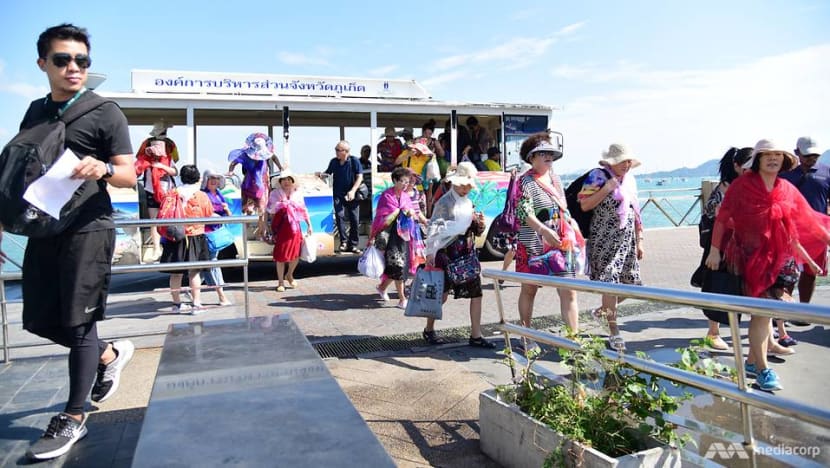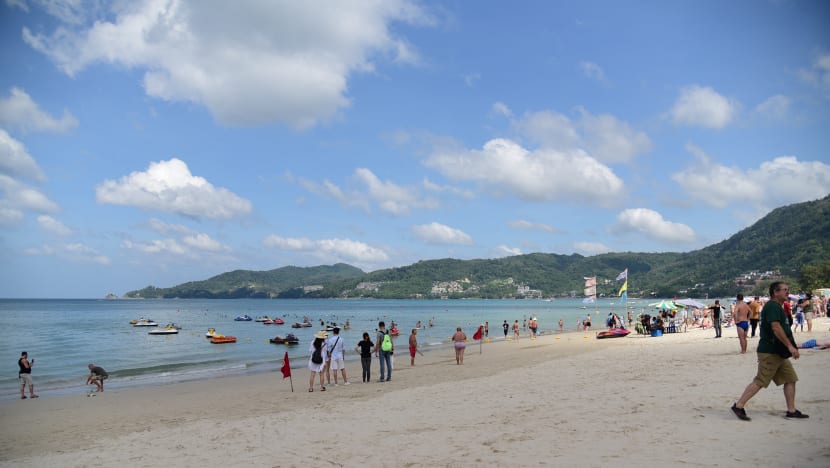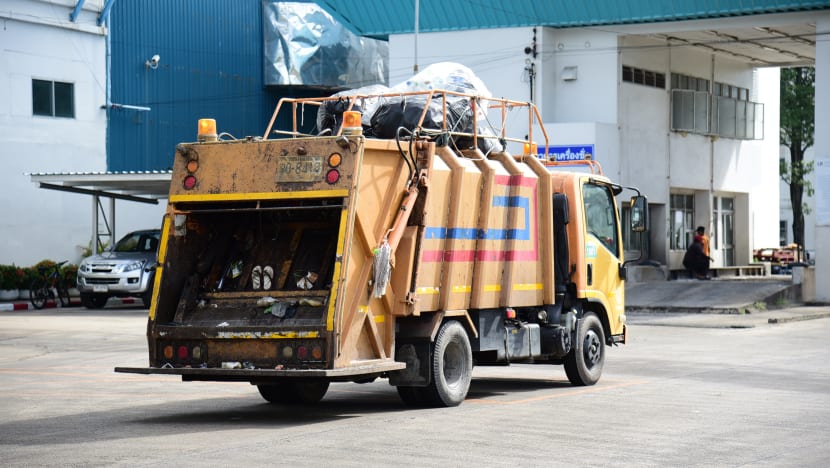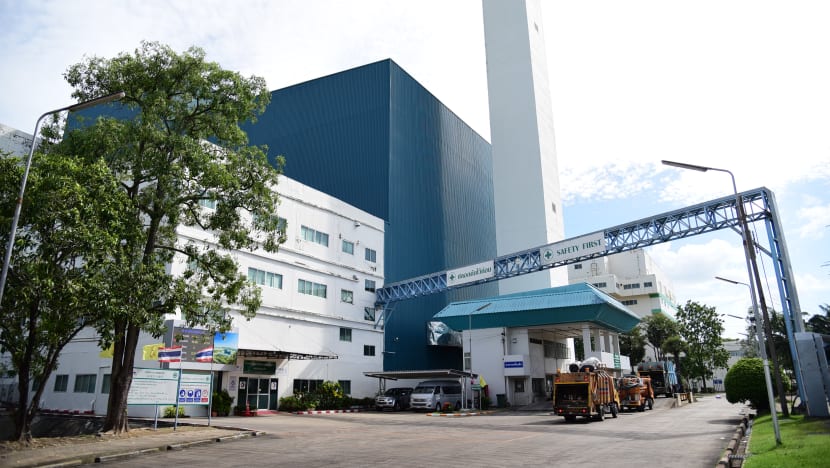Phuket already bursting at the seams but more tourists on the way
Thailand's popular resort island Phuket may struggle to keep up with an expected influx of tourists in the coming years, with its current infrastructure already struggling to cope, according to the local tourist association.

Phuket welcomed more than 14 million visitors last year and more are expected to travel to the Thai southern province by the year end. (Photo: Pichayada Promchertchoo)
PHUKET, Thailand: Day after day, hour after hour, the roads between Phuket Airport and the island's seemingly endless number of resorts are busy.
Taxis, minibuses and coaches ferry a relentless tide of tourists to and from their dream holiday. The journey shows how far Phuket has come in its quest to be the complete holiday destination, with signboards along the way for an incredible array of attractions, from paragliding to elephant rides, and from go-karting to yoga.
What the journey does not show, however, is how the island's infrastructure and natural attractions are struggling to cope with its popularity. And yet, bringing in even more visitors is a key goal - triggering a warning from the local tourist association that the resort island could be at a tipping point for survival if nothing is done to improve its capacity.
Phuket plays a big part in Thailand’s tourism scene. The Ministry of Tourism and Sports reported the industry was worth more than US$66 billion last year and the island alone contributed about US$15 billion, or more than 22 per cent of the total revenue.
The Pearl of the Andaman, as it is also known, always pops up in search engines when typing something along the line of “best holiday destinations in Thailand”. Its white powdery beaches, crystal clear water and more than 30 smaller islands off its coast attract millions of visitors every year.
Data from the tourism ministry showed more than 14 million visitors travelled to the resort island in 2018. Despite a major maritime disaster that killed 48 tourists, Phuket’s tourism industry last year expanded by more than 6 per cent. The upward trend is expected this year, too.
“We target 15 million visitors by the year end,” said Bhummikitti Ruktaengam, president of the Phuket Tourist Association.

Still, his positive projection is mixed with concern. Phuket may not be short of tourists but its infrastructure and natural resources are struggling to cope with a steady growth in visitors. The island faces water shortages. Its waste landfills are nearly full. And the amount of refuse increases every year.
“A lot needs to be done,” Bhummikitti told CNA.
Based on government data of guest arrivals at hotels and resorts, nearly 13 million visitors stayed in Phuket last year. However, the support budget from the national government is only determined by the local population of some 400,000 residents, according to Bhummikitti.
“Phuket accommodates about 800,000 people each day,” he said, saying the number comprises local residents, tourists and migrant workers. “Still, the budget allocation is based on its 400,000 residents alone. So I’d like to ask ‘what is enough?’”
For tourism operators, Phuket is more than just a province in Thailand. It is a major gateway to the Thai south and should be treated like one.
“The better gate you have, the wider it opens,” Bhummikitti said.
A huge gate that swings open to benefit everyone, from Phuket to Phang Nga, Krabi, Trang and Ranong. It’s a shame if you just look at Phuket as another province. This typical mind-set has made us lose so many opportunities already.
The private sector in Phuket is calling for more support from the national government to ensure the southern island can grow to accommodate its future visitors. They want a proper maritime safety management system, more roads, more airport slots and a new way to better manage the province.
“Phuket needs a management system that is quick and corresponds to its changes,” president of the Phuket Chamber of Commerce Thanusak Phungdet said in October.
If Phuket can be developed into a special economic zone for tourism and a smart city, he added, it could grow to catch up with Singapore or even outperform it.
“The obstacle is the budget,” Bhummikitti said.
“We have the awareness but not the money. The support budget is determined by some 400,000 registered residents. So where do we get the money to develop all these things?”
MORE TOURISTS, MORE RUBBISH
Meanwhile, more tourists continue to travel to Phuket and with them comes more waste.
The resort island generates about 950 tonnes of waste every day, according to its deputy mayor Tavorn Jirapatanasopon. The amount goes up by 7 per cent each year, he added, despite the government’s campaigns to raise environmental awareness among the public.
“The main problem is that Thailand has no waste sorting system. The biggest challenge we now face is organic waste, which accounts for about 50-60 per cent of the total waste in Phuket. It doesn’t get sorted properly and municipalities don’t have any technology or system to handle it specifically,” Tavorn told CNA.

The tourism industry contributes to Phuket’s waste problem, he added. Although more people have begun to sort recyclable waste nowadays, organic waste does not receive the same treatment.
“People still think organic waste has no value,” Tavorn said.
To manage its waste, Phuket relies mainly on incineration and landfill. About 900 tonnes of waste collected daily end up at a privately-run incinerator, which can dispose of 700 tonnes of dehumidified waste per day. The remaining 50 tonnes of rubbish go to landfill, which is three storeys high and creates a foul odour that spreads to nearby communities.

According to Tavorn, the amount of waste has already reached the maximum capacity of the province’s waste management system. Its landfill is nearly full. Without a new incinerator or better awareness, Phuket is unlikely to be able to cope with its waste problem.
Another challenge the island faces is its water resource. The growing number of visitors to the province has added pressure to its limited water supply.
A meeting between local government officials and the Office of National Water Resources (ONWR) in October revealed Phuket needs 220,000 cubic metres of water for consumption each day but can only produce 188,000 cubic metres. According to ONWR secretary-general Somkiat Prajumwong, Phuket has sufficient water for consumption but lacks an interconnected network to collect it.
“The government has a commitment to ensure public wellbeing,” said Bhummikitti.
“It’s a shame they just see Phuket as another province. I want to compare Phuket to an elite marathoner who deserves a front-row spot. He can get a good start when the race begins and just focus on achieving the best finishing time, instead of having to start off with other runners and being blocked.”














